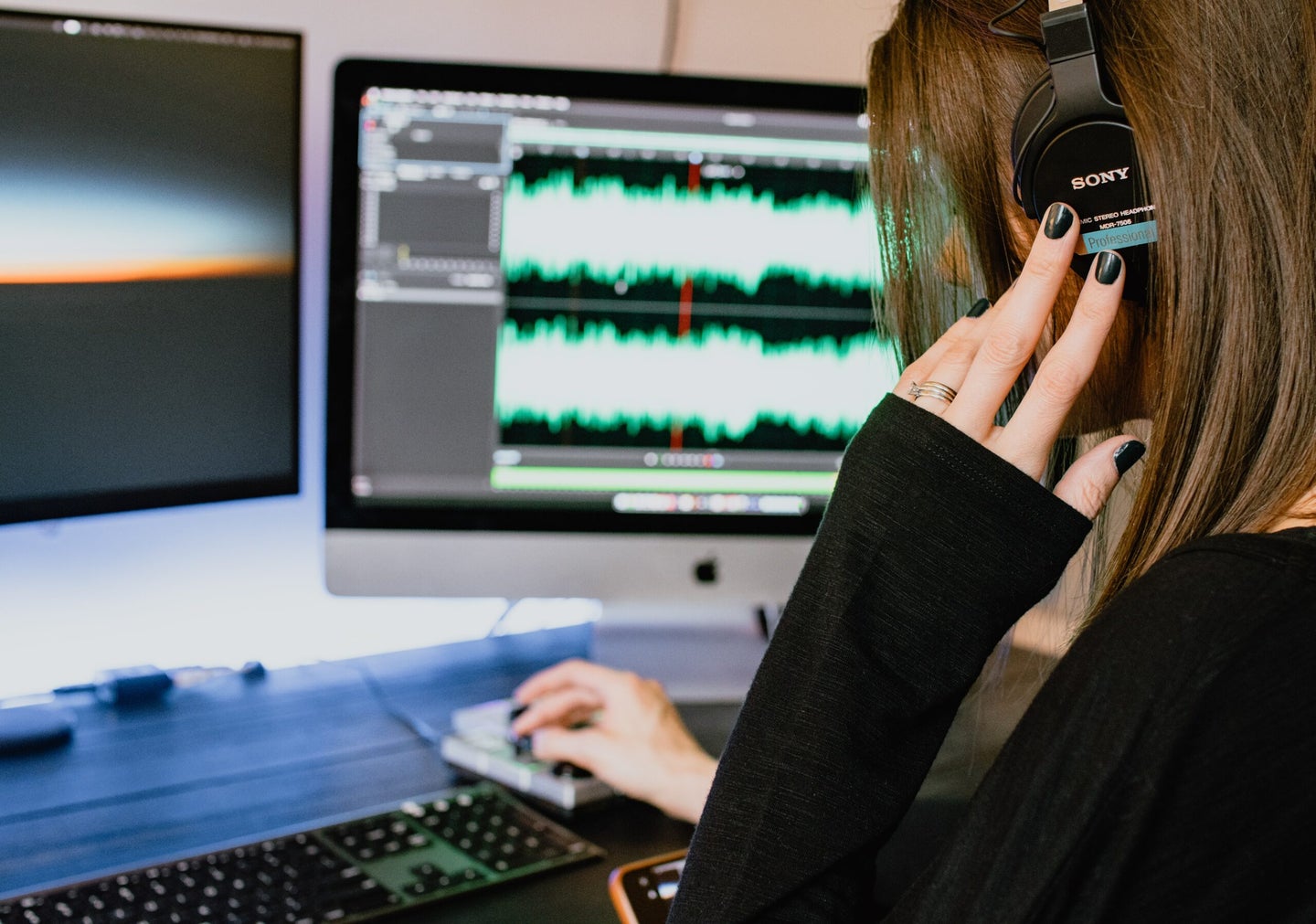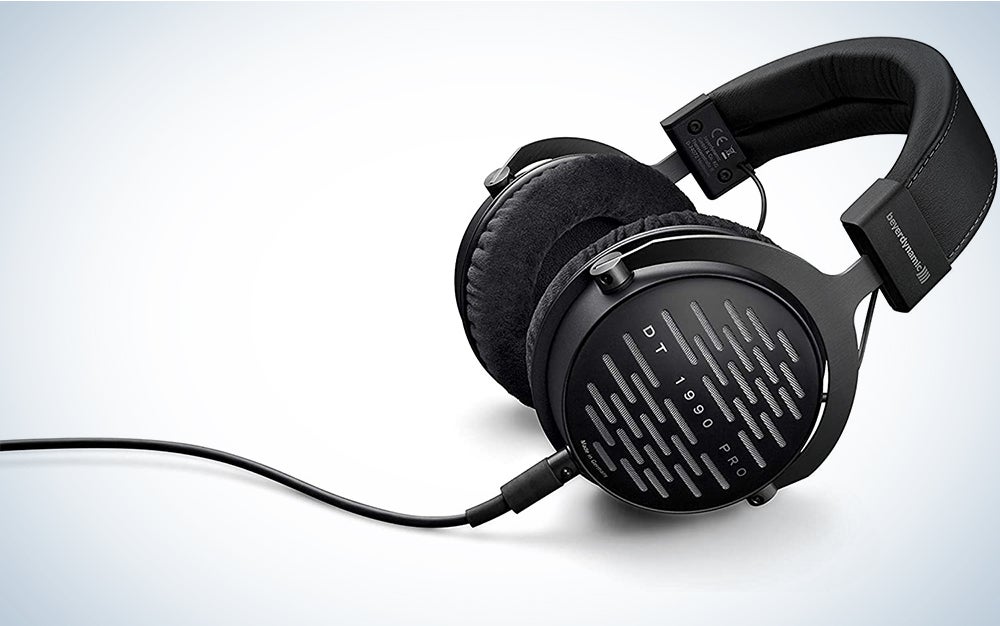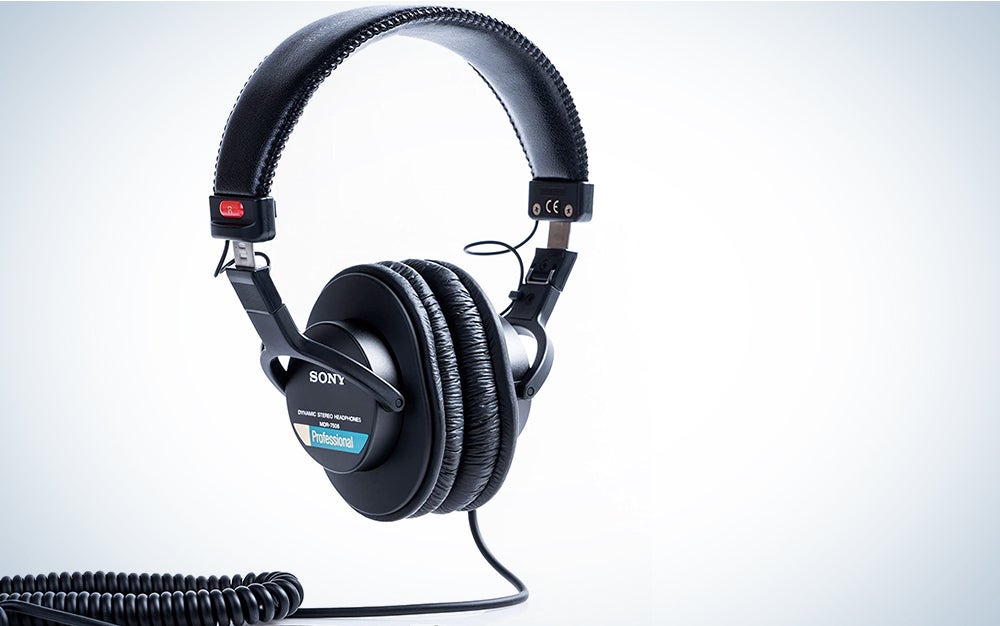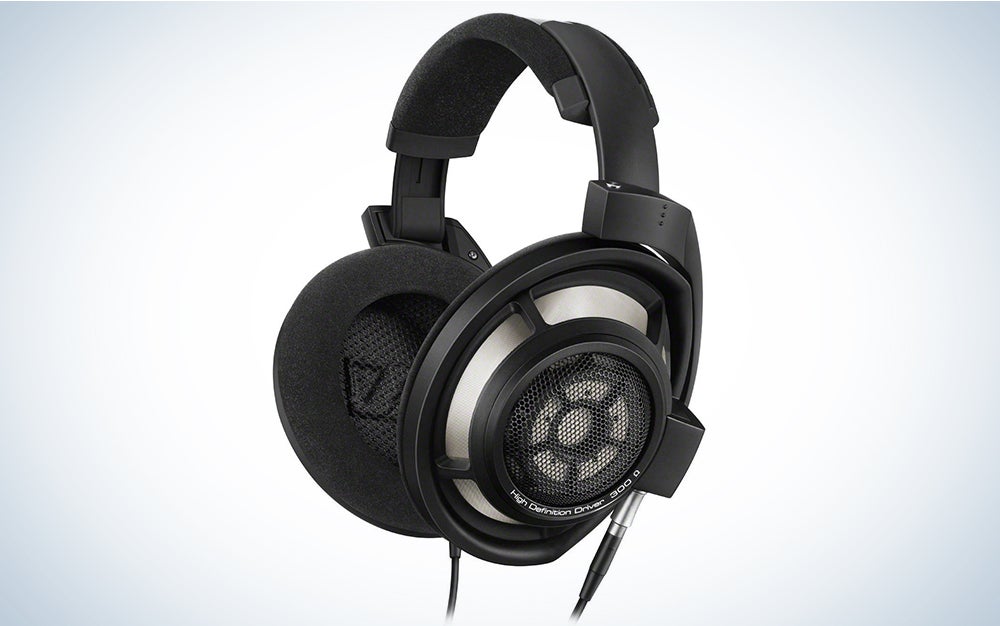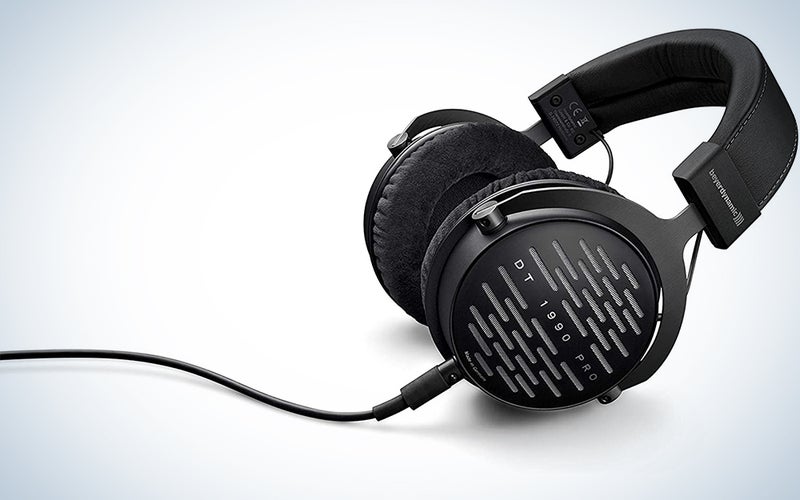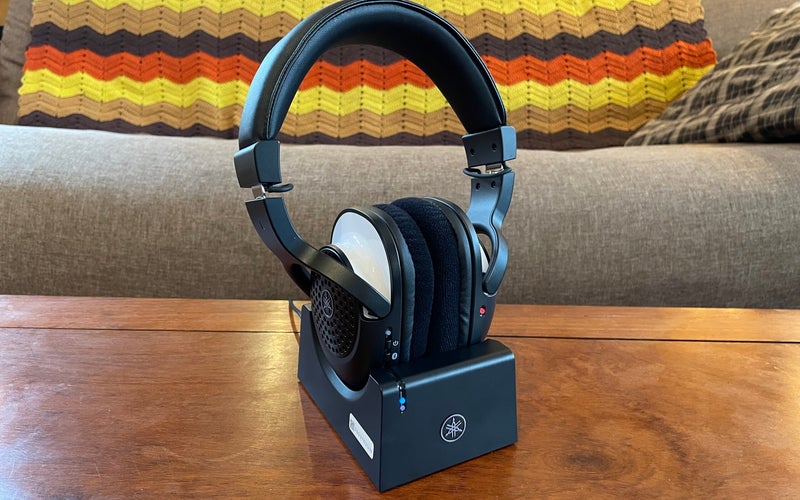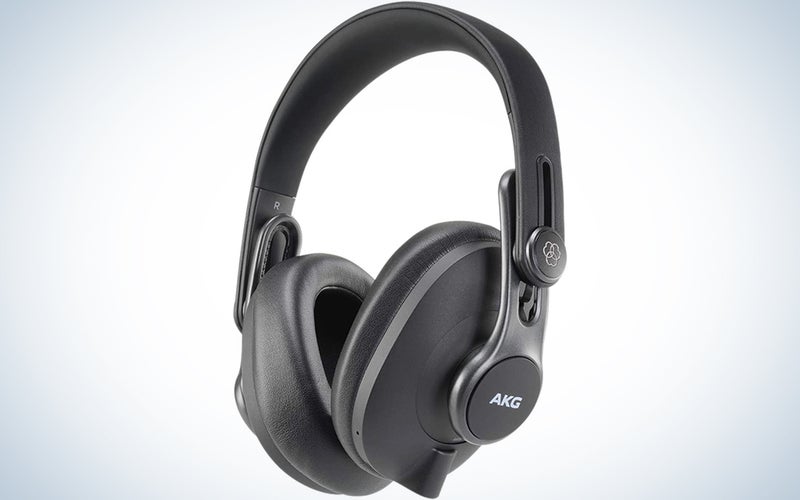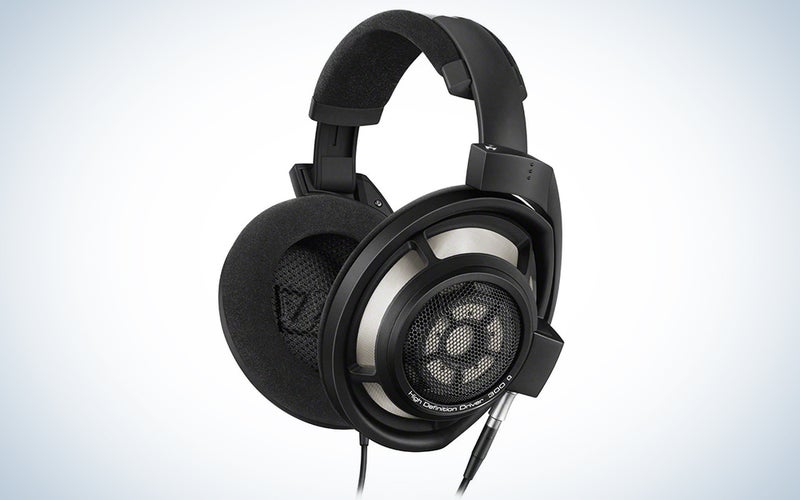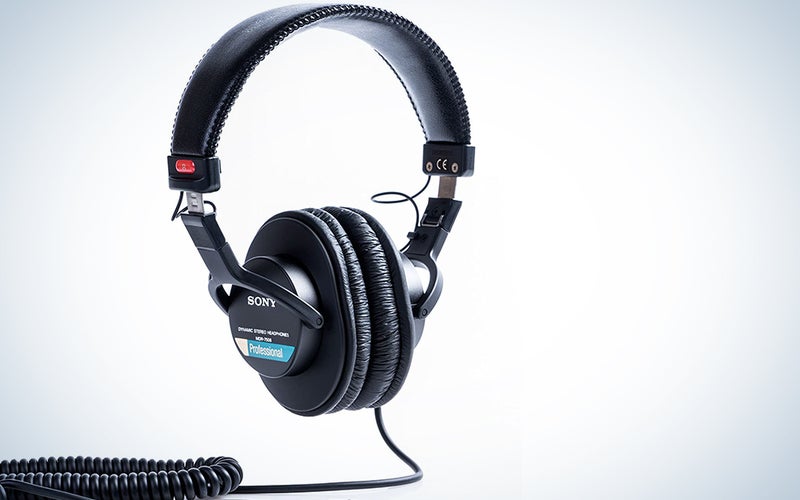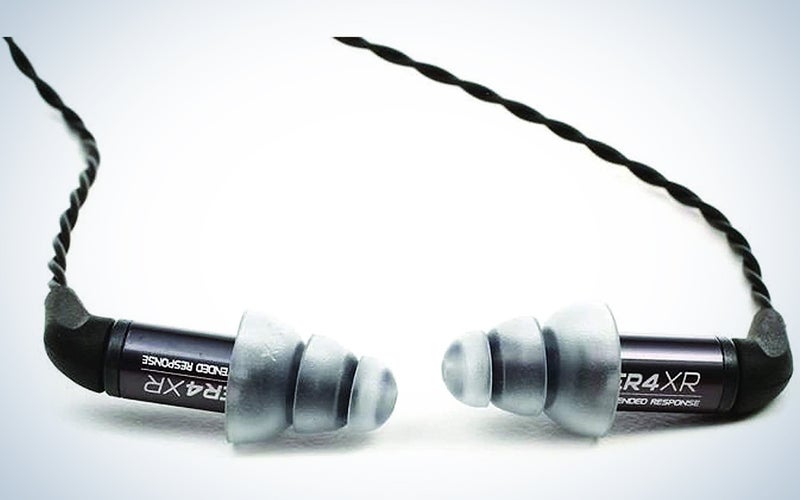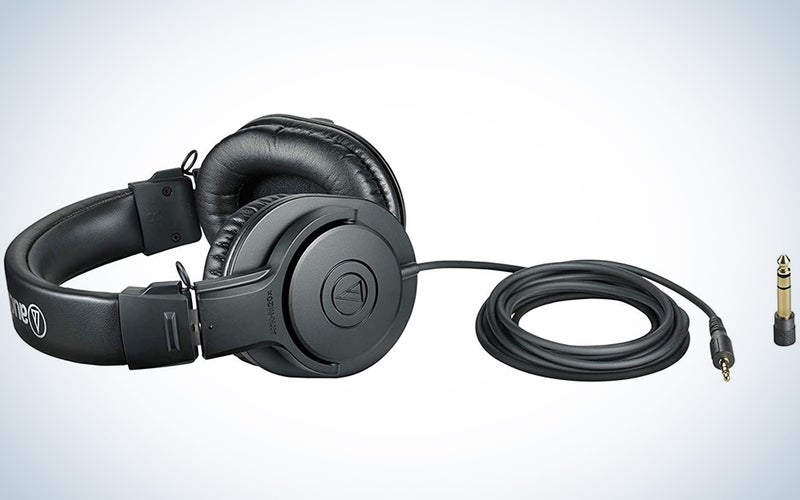We may earn revenue from the products available on this page and participate in affiliate programs. Learn more ›
Whether you’re a professional audio engineer or a weekend warrior, chances are, you have headphones in heavy rotation. Headphones for mixing provide a reliable audio reference in chaotic sound environments. They’ll help you focus on the fine details, and they’ll never disturb the neighbors. At the same time, with so many designs and styles out there, honing in on the perfect pair can feel daunting … but less so if you take advantage of our hand-picked selections.
- Best overall: beyerdynamic DT 1990
- Best for overdubs: Yamaha YH-WL500 Wireless Musical Instrument Headphones
- Best for EQing vocals: Audeze MM-500
- Best for spatial audio: Sony MDR-MV1
- Best wireless: AKG K371-BT
- Best audiophile: Sennheiser HD 800 S
- Best for DJs: Sony MDR-7506
- Best in-ear monitors: Etymotic ER4XR
- Best budget: Audio-Technica ATH-M20x
The best mixing headphones: Reviews & Recommendations
Ideal mixing headphones will unveil new sonic detail and reconnect you with music as it was intended to sound—whether that’s what’s coming directly from your digital audio workstation, through a top-tier digital audio player, or off your favorite playlists. Like studio monitors, the best mixing headphones are highly personal, so here are some of the best mixing headphones for various scenarios.
Best overall: beyerdynamic DT 1990
beyerdynamic
Professional audio engineers will tell you that open-back headphones provide the best approximation of studio monitors, with their airy, open feel and wide, natural imaging. As the best mixing headphones for studio purists, these qualities are central to the design and performance of DT 1990 studio headphones from German manufacturer beyerdynamic, which has been handcrafting headphones since 1937. With the DT 1990s, beyer has funneled all those decades of engineering expertise into highly efficient, rich but accurate 45mm Tesla neodymium drivers designed to deliver high-resolution sound with powerful lows, detailed mids, and smooth highs. Titanium-coated acoustic fabric and precision-woven textiles help round off the DT 1990’s balanced sound quality. You’ll be giving off Death Star vibes in these sleek, black cans with big perforated earcups. But all that metal remains comfortable because of the two sets of interchangeable earpads, which let you choose between sonic profiles with a neutral frequency response or a slight bass boost. At $559 (and maybe an amp to fully realize the 250-ohm design’s potential), DT 1990s will make a dent in your gear fund, but beyer softens the blow by throwing in tons of accessories, including the earpads, straight and coiled cables, hard case, and a cleaning solution and pad. Plus, you’ll make it back when you mix a hit banger.
Best for overdubs: Yamaha YH-WL500 Wireless Musical Instrument Headphones
Julian Vittorio
Specs
- Style: Semi-open-back/over-ear wireless
- Drivers: 40mm dynamic
- Frequency response: 20 Hz-20kHz
- Weight: 0.69 lbs
- IP rating: N/A
- Battery life: 9 hours
Pros
- Low-latency wireless monitoring at 4 milliseconds
- Sound and design tuned specifically for musical performance
- Listen simultaneously via Bluetooth and wireless transmitter
Cons
- Semi-open design isn’t ideal for listening in public
- Headphones aren’t sold without transmitter
- No built-in mic
Until recently, musicians have had scant options for wireless monitoring in studio and practice spaces due to latency and reliability issues. The new Yamaha YH-WL500 aims to shake up this paradigm, offering sound quality and connection stability that can go head-to-head with any wired pair of headphones in a studio setting. A dual-unit set that includes a headset and a dock, the YH-WL500 is built to connect to your guitar, keyboard, or other live audio sources and send it directly to your ears with a nearly imperceptible latency of just 4 milliseconds. This makes these headphones a great option for practicing before a take and also looping into a music production setup for cordless, latency-free monitoring of recording sessions.
The Yamaha YH-WL500’s charging dock is a latency-free wireless transmitter that accepts any 3.5mm stereo audio input. Using this input, users can simultaneously cast audio to the headset via Bluetooth and play along via the transmitter, making this a great option for practicing at home. The headset can also operate independently from the dock in Bluetooth mode; however, its lack of a built-in microphone and its airy open-back design make it less suitable for everyday commuter and office use. One interesting feature is the ability to pair multiple pairs of YH-WL500 headphones to the same transmitter dock. While this has great implications for use in group performance scenarios, the headphones are unfortunately not sold without the dock currently.
Best wireless: AKG K371-BT
AKG
The K371-BTs are mid-level professional studio headphones from AKG, the 75-year old Austrian company behind the iconic studio microphones used to record many of your favorite songs. These over-ear, closed-back cans are designed to marry pro performance with Bluetooth convenience, featuring beefy 50mm drivers and pure oxygen-coated voice coils for clear, balanced sound, with an extended frequency response of 5Hz to 40kHz. You’ll hear every detail you need to make informed mix decisions, from the deepest lows to the most sparkling highs, and their memory foam earcups’ sound-isolating qualities let you hear without distractions. K371-BTs ($179) also bring the advantages of Bluetooth 5.0, like extended range and long battery life, but curiously, don’t support the aptX codec, only AAC and SBC, which means limited higher bitrate streaming capability. But this is a minor issue, given that Bluetooth features are meant to be mere conveniences and while they’re good to test how an average Spotify user might hear a track, professionals should be plugging in to listen critically to full-bandwidth audio. And if you’re as busy booking the next session as you are sculpting frequencies, a built-in microphone allows two-way Bluetooth communications; earcup gestures control answering calls, adjusting volume, and playing and pausing music. (If Bluetooth doesn’t matter to you, these AKG headphones are available in a non-Bluetooth variant.) The K371s are designed for mobile lifestyles: Wire-free operation lasts 40 hours; earcups swivel 90 degrees, and metal-reinforced hinges add brawn to a somewhat slight headband design. Three mini-XLR to 3.5mm cables are included.
Best audiophile: Sennheiser HD 800 S
Sennheiser
When Sennheiser introduced its flagship HD 800 over-ear, open-back headphones more than a decade ago, they became instant icons in both the pro audio and audiophile worlds, thanks to their richly detailed, natural response and open, neutral presentation. Like the originals, the newer HD 800 S headphones are hand-assembled in Germany. They’re based on Sennheiser’s 56mm, D-shaped Ring Radiator, which Sennheiser claims is the largest driver ever used in a dynamic headphone, and incorporate resonators that smooth out subtle resonances and peaks. That may sound like a lot of bulk, but these airy headphones weigh just 330 grams, making for effortless long wear. They also sport an improved yoke and a sexy matte-black finish. But back to the sound … you’ll be stunned by the detail you unveil when you hear your go-to reference tracks spread out across the headphones’ 4-51,000Hz frequency response. Their accuracy, transparency, and openness rival that of the most balanced studio monitors, whether you’re doing highly technical critical listening or just enjoying your favorite music. If you have $1,600 to spend on top-of-the-line headphones, these are widely, wisely considered the best in the game. They even come with a certificate of authenticity.
Best for DJs: Sony MDR-7506
Sony
Sony MDR-7506 headphones, the best mixing headphones for DJs celebrate their 30th anniversary in 2021. These enduring, lightweight, foldable headphones can be found everywhere professional audio engineers work: in music studios, on broadcast stages, on location. While the $99 MDR-7506s are officially studio headphones, DJs love them for the same reasons that engineers do. They deliver bright, crisp, neutral sound, they offer superior isolation with minimal leakage, and they’re built like a tank. Their all-black, straightforward design is more utilitarian-looking than other models, but what they lack in swagger they make up for in performance features that appeal to DJs. These over-ear, closed-back headphones offer well-balanced sonic clarity that cuts through club noise. Their high sensitivity means they’re easy to drive loud and their 40mm drivers deliver low-frequency extension to 10Hz, which translates to defined bass, no matter how low you go. The MDR-7506’s well-padded, close-fitting earcups swivel, and a beefy 3-meter coiled cable may be cumbersome for commuting but allows plenty of free movement onstage. As longtime users can attest, however, the vinyl earpads are notorious for wearing out quickly, which has led to a robust market for replacement options.
Best in-ear monitors: Etymotic ER4XR
Etymotic
In the right situations, IEMs, or in-ear monitors, are perfect studio headphones despite not being technically headphones at all. Because they sit in your ear canal and block out external sound, they take a bad-sounding mixing environment right out of the equation, giving you a consistent reference anywhere you work. And thanks to their size, they’re perfect if you like to work everywhere. On top of packing light, IEMs let you monitor at lower volumes, so you’ll have less ear fatigue during marathon sessions.
There’s a lot of market pressure to deliver “big bass sound” in in-ears; in response, Etymotic’s ER4XR IEMs ($197) depart from the company’s traditional uber-analytical frequency profiles by slightly nudging bass presence to add a bit of warmth. While this may make them a little less flat than others in the bunch, they’re still more accurate than most IEMs in their class, and they’re pleasing to listen to, whether for studio material or as stage monitors. IEMs need a perfect fit to provide long-term listening comfort, great isolation, and full-bandwidth sound. The ER4XRs come with a range of tip styles and sizes, but to ensure a good seal, you must insert long triple-flange silicone tips pretty deep into your ear canal, which can feel disconcerting at first. However, once you dial in that perfect fit, you’ll experience an impressive 42dB of isolation. If you love the precision, isolation, and versatility of IEMs but even slightly elevated bass isn’t your jam, check out Etymotic’s ER4SR IEMs, which offer the same performance and features as the ER4XR without the enhanced low-end tuning.
Perhaps you’re a professional live-sound engineer, and you’re looking for a universal or custom IEM suited for the rigors and requirements of full-spectrum performances. If so, check out this 10-driver per side design co-engineered by Jerry Harvey Audio—originators of pocketable monitors for musicians and crew—and L-Acoustics—the renowned French sound reinforcement tech company. The intention is right there in the name: It’s the Contour XO, not the Conbedroomstudio XO. And the result is articulate and energetic, clean and capable, with a sonic signature that leans into rich mids but doesn’t sacrifice treble clarity or adjustable subbass physicality. Capable of -26 dB noise isolation, these IEMs can preserve your hearing as well as the tonality of the performance in any given concert hall.

Best budget: Audio-Technica ATH-M20x
Audio-Technica
If you’re looking a bass lover looking for the best mixing headphones, Audio-Technica’s wildly popular ATH-M20x mixing headphones deliver the goods. These versatile, all-purpose studio headphones feature 40mm neodymium drivers with rare earth magnets and copper-clad aluminum wire voice coils tuned for deeper bass performance. They weigh just 190 grams, making them comfortable (if a bit warm) over long sessions. Their over-ear, closed-back design provides great isolation for tracking or mixing in loud environments and, at just $49, they’re affordable enough to stock up for everyone in the studio. Plus, they’ll let you test just how much air your track can push. If you’re looking for a few more bells and whistles, try the ATH-M50x ($149), pro studio faves that offer larger drivers and wider frequency response, and come in wired and wireless versions.
Things to consider when picking the best mixing headphones
When you’re mixing, it doesn’t matter if you recorded with the world’s most gorgeous microphones and dazzling special effects, if you straddled up to your Shure SM7B to put on your best NPR podcasting voice, if you aren’t able to hear a true sonic representation of your tracks. This is where professional mixing headphones differ from their consumer cousins. Consumer cans are designed for an enjoyable listening experience, so they tend to have a sonic profile emphasizing big bass and extra-shimmery highs. But this is the sonic equivalent of an Instagram filter: You may perceive that your music has too much bass, for example, but that’s really the headphones talking. So maybe you dial that bass down, but then you play your new mix on another system, and suddenly it sounds thin and weak. Professional mixing headphones, on the other hand, are all about presenting an honest, accurate translation of your mix—even if it isn’t pretty. When your mix is exposed, warts and all, you can listen critically and make informed decisions without compensating for the “sound” of your headphones.
Do I want open-back or closed-back headphones?
Open-back and closed-back mixing headphones each bring sonic advantages; the right choice for you largely depends on the way you work. Closed-back headphones have earcups sealed on their outer face. This design offers significant acoustic isolation, keeping sound from leaking out while blocking ambient sounds from creeping in. This sound-insulating quality makes closed-back headphones perfect for mixing without distractions in noisy environments and for recording in the studio when performers need to hear their mixes without sound leaking into their mic. Open-back headphones have earcups with vented backs that allow airflow and provide a spacious feeling and a wide, airy soundstage. Their natural, speaker-like response makes them ideal for critical listening, which makes them preferred by professional mixing and mastering engineers.
Should I get over-ear or on-ear headphones?
Headphone earcup designs fall into two categories. Over-ear (or circumaural) headphones have big, cushy earpads that encircle your ears. They tend to provide more spacious sound imaging than on-ears because their drivers are positioned away (sometimes at custom angles) from your ears, producing acoustic effects that more closely mimic sound coming from speakers. Over-ear headphones usually feature large drivers; generally, the larger the driver, the more expansive the frequency response, especially in the low end. On-ear (or supra-aural) headphones sit directly on your ears. They’re smaller and lighter (and generally cheaper) than over-ear headphones, making them a great choice for life on the go. Over-ear headphones are more comfortable than on-ears during long sessions because their earpads surround your ears versus pressing against them.
Do I need a headphone amplifier?
You might be wondering if there’s any benefit to adding a headphone amplifier to your rig. The short answer: Maybe, but probably not. An amplifier increases your sound source’s power output to the level needed to drive your headphones to reach the output level you want, so they can provide better sound. This doesn’t matter when you’re, say, plugging earbuds into your phone. And if you’re using a mixer or an interface, it already has built-in amplification. But some types of headphones require a lot of power to play loud; these models are usually high impedance, above 50 to 100 ohms. Headphone amps won’t do much to improve the sound quality of cheap headphones. High-end, high-impedance headphones, however, may require amping for significant improvements in clarity, detail, and dynamics.
FAQs
Q: How do I choose headphones for mixing?
Headphones for mixing, unlike consumer headphones, should have a flat, neutral acoustic profile so you can make accurate, informed decisions about your mix. When choosing headphones for mixing, think about where and when you mix. Do you mainly mix in a consistent, quiet environment, or are you often working on location or while you travel? Weigh each headphone’s ability to block out the surrounding environment against their acoustic signature: In-ears provide the best isolation but may lack punch or expansive imaging, and open-back headphones offer the most natural sonic experience but the least isolation. Audition headphones using familiar, commercially produced material, noting accuracy, soundstage depth and width, and bass response. Pay attention to build quality: Models with metal parts will withstand more abuse than all-plastic models; leather and microfiber earpads last longer than vinyl pads. Check the specs: The higher the sensitivity, the harder your headphones can be driven, and the higher the impedance, the more power the headphones need to deliver high audio levels. In some cases, you’ll need an amp to bring them to their full sonic potential.
Q: Is it better to mix with headphones or speakers?
Aspiring audio engineers commonly agonize over whether to mix with headphones or speakers. The truth is, you can get great results with both. Generally, studio monitors are preferable, but because studio monitors interact with the room, they perform best in well-treated acoustic environments—which may not be a real-world scenario for you. Headphones are far more portable and provide a consistent sonic reference in inconsistent working conditions. One pitfall to watch out for: Headphones present a wider soundstage, because there’s literally a speaker on each side of your head. This makes it easy to overcompensate by creating narrow mixes. A smart practice is to mix on speakers and reference that mix on headphones, and vice versa.
Q: What headphones do sound engineers use?
Remember that sound engineers seek accuracy and neutrality in sonic references and favor headphones for their analytical qualities, not an enhanced listening experience. That said, there are plenty of models out there that bridge those two worlds, letting you nitpick over the fine details of your mixes and still kick back with your favorite jams. Most sound engineers prefer the airiness and natural imaging provided by open-back headphones when they’re mixing, but when they’re recording, they’ll switch to closed-back headphones, which block out some room sounds while minimizing sound leakage from the headphones into a microphone.
Final thoughts on the best mixing headphones
- Best overall: beyerdynamic DT 1990
- Best for overdubs: Yamaha YH-WL500 Wireless Musical Instrument Headphones
- Best for EQing vocals: Audeze MM-500
- Best for spatial audio: Sony MDR-MV1
- Best wireless: AKG K371-BT
- Best audiophile: Sennheiser HD 800 S
- Best for DJs: Sony MDR-7506
- Best in-ear monitors: Etymotic ER4XR
- Best budget: Audio-Technica ATH-M20x
At the end of the day, headphones are an entirely personal choice. When choosing mixing headphones, sonic performance is paramount. But the best mixing headphones don’t just sound great. They present an honest, accurate picture of your mix; sound consistent at low and high volumes; are comfortable to wear for hours on end; and are rugged enough to survive heavy use. Beyond that, it’s all about finding the right style for your needs, whether you’re recording and mixing in the studio, performing, or just seeking your own private paradise where you can get lost in your songs.
Why trust us
Popular Science started writing about technology more than 150 years ago. There was no such thing as “gadget writing” when we published our first issue in 1872, but if there was, our mission to demystify the world of innovation for everyday readers means we would have been all over it. Here in the present, PopSci is fully committed to helping readers navigate the increasingly intimidating array of devices on the market right now.
Our writers and editors have combined decades of experience covering and reviewing consumer electronics. We each have our own obsessive specialties—from high-end audio to video games to cameras and beyond—but when we’re reviewing devices outside of our immediate wheelhouses, we do our best to seek out trustworthy voices and opinions to help guide people to the very best recommendations. We know we don’t know everything, but we’re excited to live through the analysis paralysis that internet shopping can spur so readers don’t have to.
